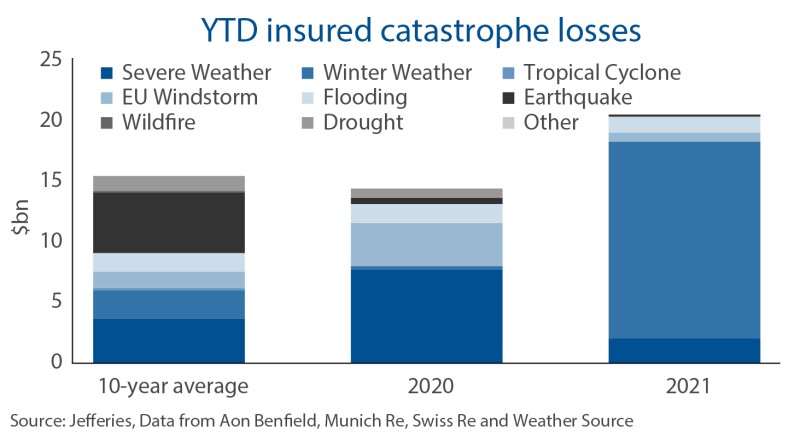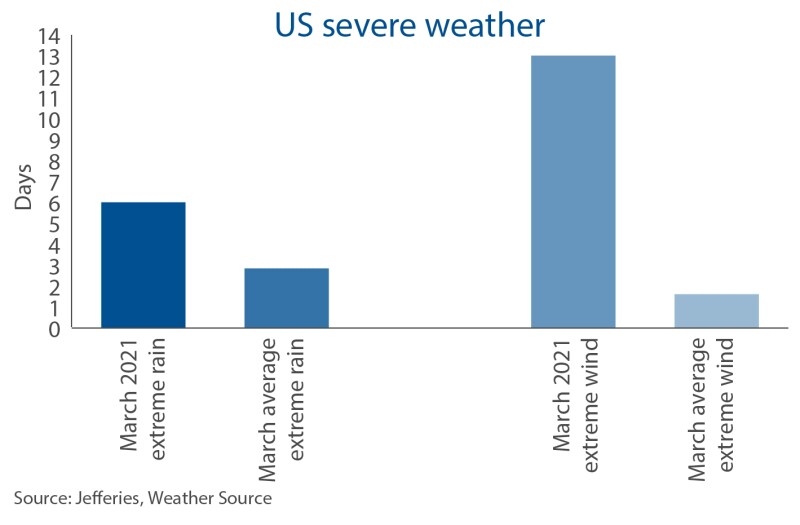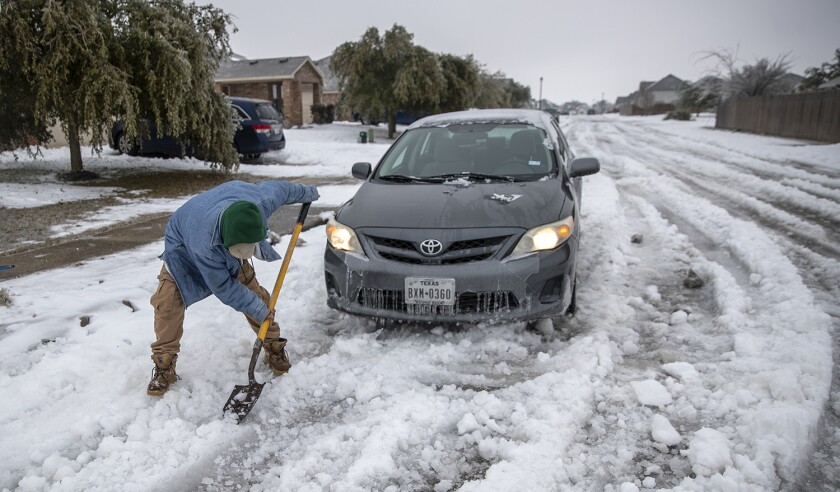Drawing on data from Aon, Munich Re, Swiss Re, Willis Towers Watson and Weather Source, analyst Philip Kett estimated catastrophe claims YTD were running 37% above the long-term average and 33% above the 10-year average, at just over $20bn.
Over the last decade, the average YTD insured-loss figure has been just over $15bn.

Kett’s report cited February’s US polar vortex as the chief contributor to the relatively high loss figure.
Although March was “more benign” with below-average insured losses, the polar vortex, combined with Australian floods and EU windstorms, made the period “one of the worst starts to 2021”, Kett said.
Kett added that the firm had to recalculate its US winter-weather loss total at $15.3bn, “up materially from our initial guesstimate of $7.6bn-$12.5bn last month”, which he pointed out was broadly in line with industry estimates of $10bn-$20bn.
He noted: “Claims frequency relating to this large loss is high, although claims severity remains uncertain, and there seems to be anecdotal evidence severity is actually relatively low, with policyholders retaining a larger proportion of claims, lessening the cost to underwriters.”

Aside from the US winter weather losses, other notable events include $1.7bn of claims from other incidents of severe weather in the US, $700mn from European windstorms and $400mn from Australian floods, the analyst added.
Kett said initial broker indications suggested favourable rate increases at the end of March and start of April reinsurance renewals, particularly in Japanese wind and flood.
“Given that natural catastrophe losses are running far above average YTD,” he noted, “this could build momentum for both insurance and reinsurance prices.”
For the month to come, Kett said he expected “broadly benign” weather and catastrophe losses, as spring in the northern hemisphere tends to be a “quiet season” for underwriters.
“Potential perils to watch out for in April,” it added, “are a late spring frost, which is critical for agriculture claims, and earthquakes, especially in light of the increased frequency of earthquakes near New Zealand and Japan recently.”


